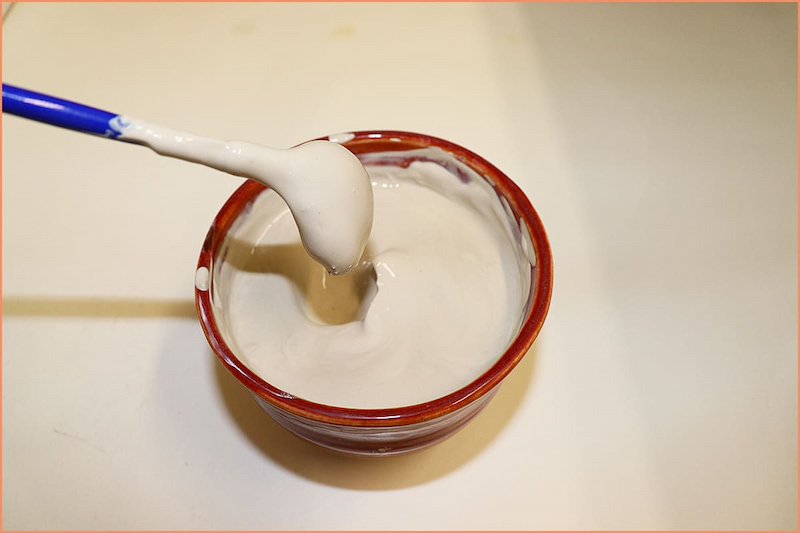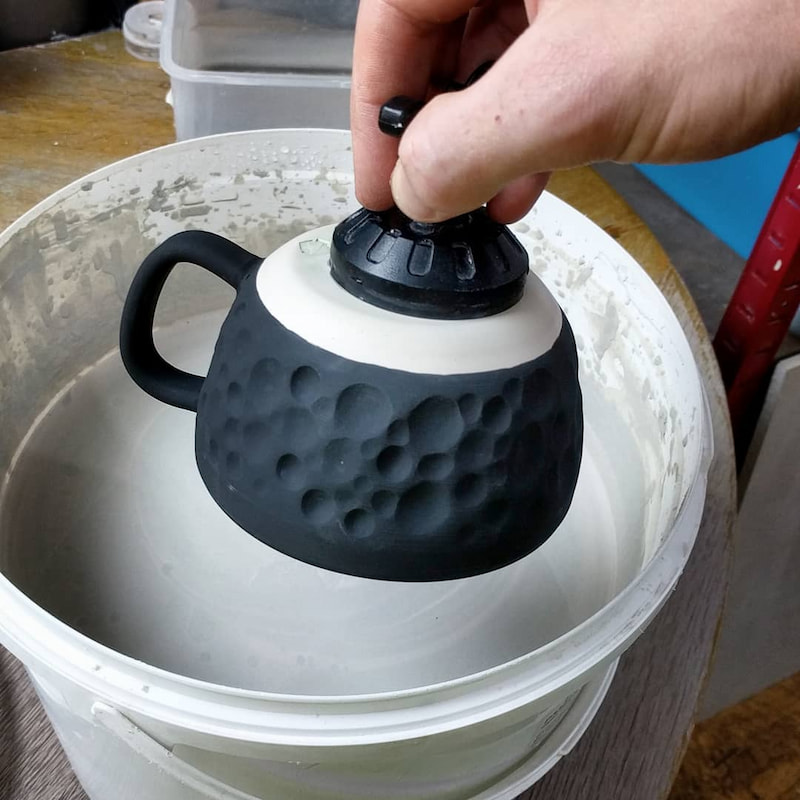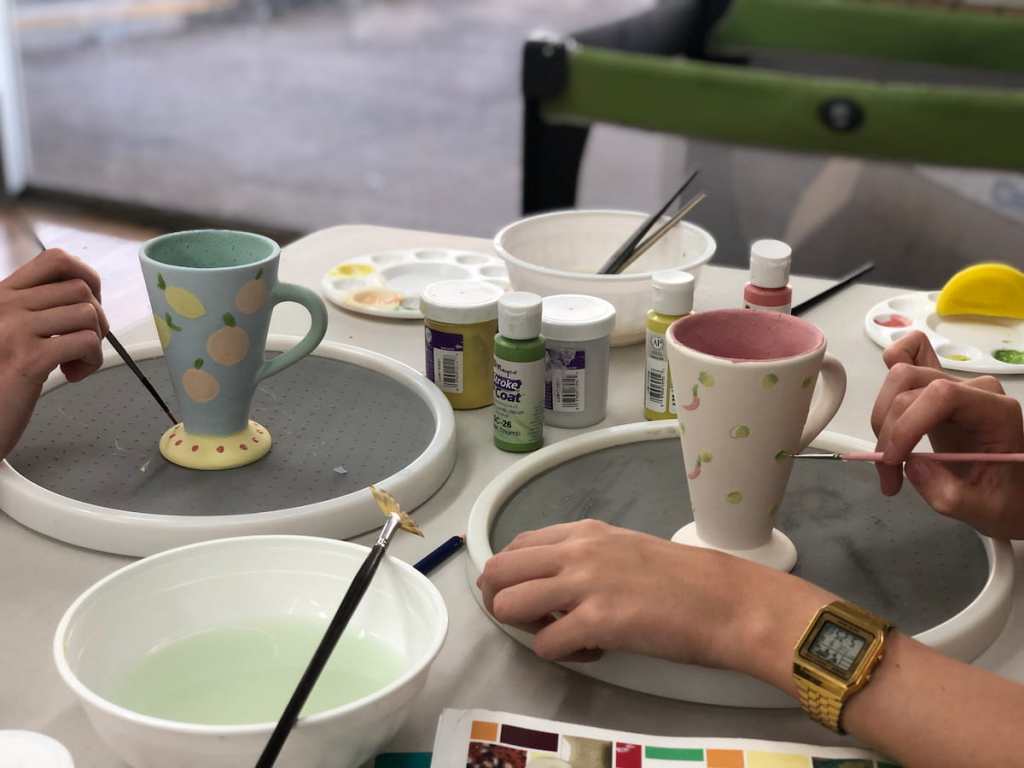Bringing your ceramic artwork to life means utilizing the right paint colours. However, potters rarely use conventional paints to get extra colourful effects on their creations. When fired to maturity, all of these specialized painting agents fuse to the clay body, preventing wear and flaking off like paint does. However, some conventional paint materials can be utilised when a pottery work is meant to be displayed rather than used functionally.
Top 5 Methods for Painting Pottery
Nowadays even clay colours are available in a wide range of options. When narrowing down your choices, a quality pottery colour will make your ceramic artwork stand out. These are the 5 most common methods for painting pottery.
Underglazes
In ceramics, underglazes are used to produce patterns and designs that show through the glaze that covers them. This may provide more visual complexity and personality to the surface. They can be used under other transparent glazes, usually light-coloured ones, however, they are typically employed beneath clear glazes.
If you use ceramic colours that are sufficiently thin and contain enough colourant to reduce fading, you can achieve effects on ceramics that resemble watercolour paintings. When trying to achieve wash effects, AMACO’s semi-moist underglaze pans are considerably easier to manipulate than liquid ones, and they work rather well for producing watercolour-like effects.
Use liquid underglaze and work in a much heavier, “painterly” manner, applying a lot more underglaze to the clay surface to achieve effects more akin to acrylic paint. Since many liquid alternatives are not at their peak strength until three layers have been applied to the clay surface, it is better to work in layers. Keep in mind though that even if you can’t see them before firing, dark colours will seep through layers above.

Slips
A liquid dispersion of clay particles in water is called a slip. Generally speaking, it is thinner than slurry. Compared to engobe, another near relative, the slip has more clay. Slip typically has a thick cream-like consistency. It is frequently utilised as décor. It can be coloured using oxides or left the original colour of the clay body from which it is formed. It is used on leather-hard greenware that is damp or pliable. To keep casting slip in a homogeneous solution until it dries, additives are virtually always added.
When painting, you can use oxide-tinted coloured or white slips. When throwing other pieces, some potters save the slips that are left over. The optimum use case for slips is damp greenware.
Utilizing slips as a pottery colour comes with some advantages. Errors are considerably easier to completely fix. The shrinkage of the clay is better matched by slip painting, so there’s less chance of heavier applications peeling off during drying or fire.
Since the slip painting and the pot, it is on are bisque together, you can use underglazes or other engobes to add more colour to the picture to accentuate its visual effect.

Oxide Stains
Ceramic stains can be manufactured by colouring oxides (commercial stains) or ceramic colourant oxides suspended in water. Commercial stains can be purchased in liquid or powder form, while colourants are typically sold in powder form.
Oxide stains work great as ceramic color in adding large expanses of colour and painting flowing lines. Alternatively, you might use commercially made stains, which are more chemically stable and safer to handle because they frequently contain fritted material.
Alternately, stains can be made as simple as mixing earth oxides with water; but, with these, you must be careful about the glaze that you apply. Certain oxides are erratic in that their colour can shift significantly based on the other components present in the glaze. For instance, chromium oxide is typically thought of as a green colourant, but it can turn pink in glazes containing tin.

Glazes
For many years, potters have been painting ceramics by hand using glazes. This includes painting distinct regions with different coloured glazes and applying glazes directly on one another, like in the majolica traditions.
This approach has the drawback that when the glaze melts during the fire process, it is more likely to flow. This may result in drawings drooping, becoming hazy around the edges, or even totally vanishing into an underlying glaze.

Acrylic Paint or Fingernail Polish
Painting ceramic objects is not the only way to apply paint when the piece is not intended to be used. Potters can embellish non-functional ceramic works with any number of different conventional paints, and they often do. But be aware that if the finished piece gets wet or is meant for long-term outdoor usage, these non-ceramic choices are likely to flake or peel off.
One area where artists commonly use traditional paints is ceramic items intended for display. This type of painting can benefit greatly from the employment of two non-ceramic materials. The most popular clay color to use is acrylic, although nail polish can also work wonders. Both of these compounds have the advantage of not absorbing water once they have dried, in contrast to other paints.
In addition to their non-functionality, fingernail polish and acrylic paint have the potential to visually flatten and weaken the clay surface they are applied on. However, complete visual integration of these elements with the clay might be challenging.



Leave a comment